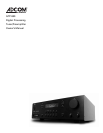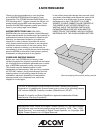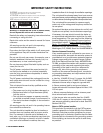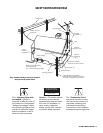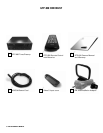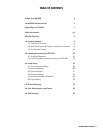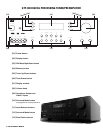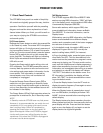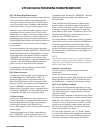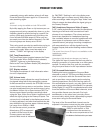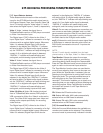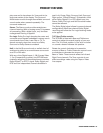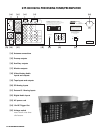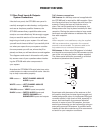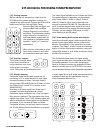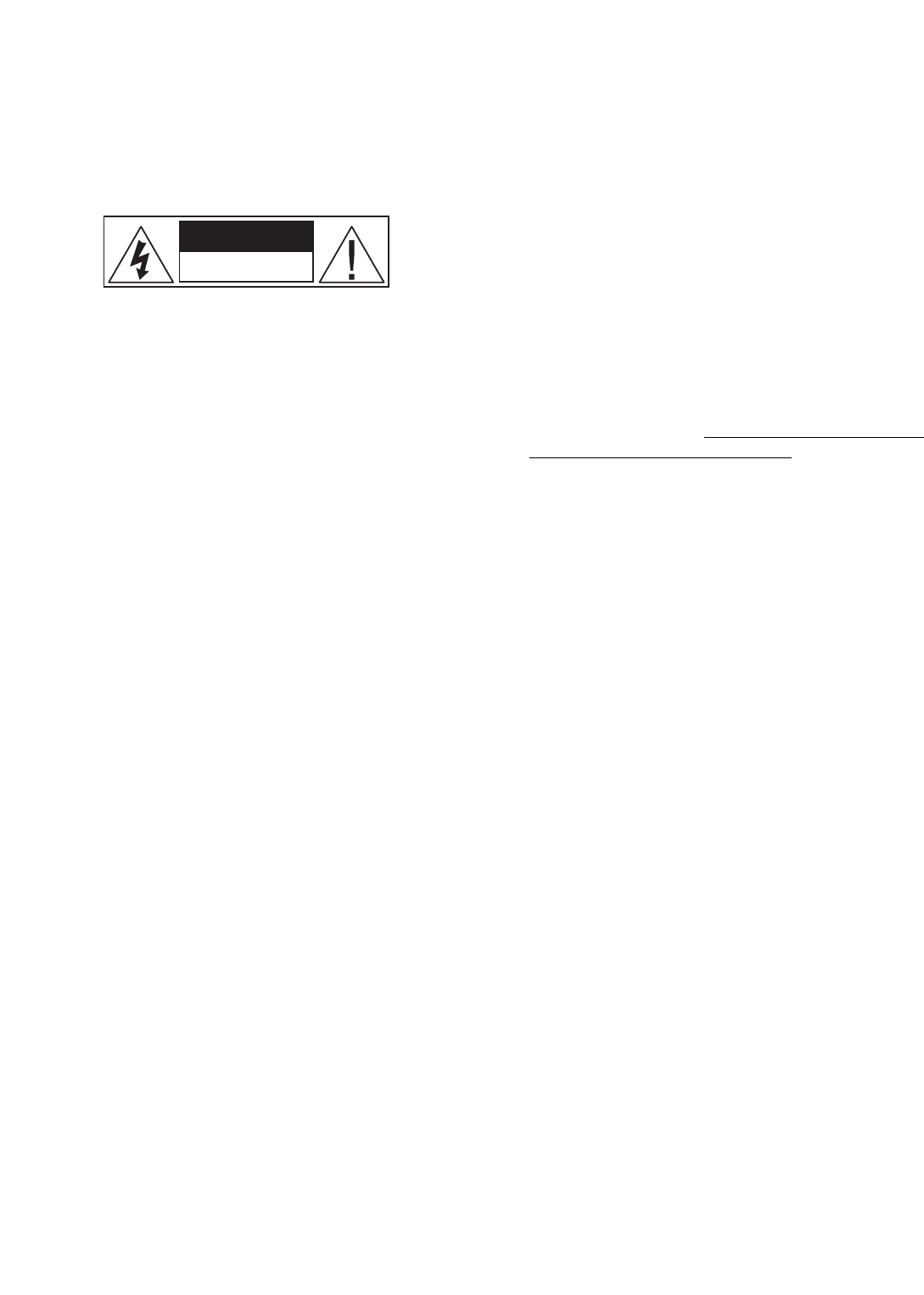
4 | ADCOM OWNER’S MANUAL
IMPORTANT SAFETY INSTRUCTIONS
Warning: To reduce the risk of fire or electric shock,
do not expose this unit to rain or moisture.
Read all the safety and operating instructions before
connecting or using this unit.
Retain this notice and the owner’s manual for future
reference.
All warnings on the unit and in the operating
instructions should be adhered to.
Even when the light of the switch is off, some parts
of the appliance may still be under hazardous live
potential.
Do not use this unit near water: for example, near a
bathtub, washbowl, kitchen sink, laundry tub, in a
wet basement, or near a swimming pool.
Do not place any object filled with liquids, such as
vases, on the unit.
The AC power cord should be routed so that it is
not likely to be walked on or pinched, especially
near the plug, convenience receptacles, or where
the cord exits the unit.
The AC power cord should be unplugged from the
wall outlet when the unit is to be unused for a long
period of time.
This unit should be serviced by qualified service
personnel when:
—The power cord or plug has been damaged; or
—Objects have fallen or liquid has been spilled,
into the unit; or
—The unit does not appear to operate normally,
or exhibits a marked change in performance; or
—The device has been dropped, or the enclosure
damaged.
All warnings on the unit and in its operating instruc-
tions should be adhered to.
The unit should be installed so that its location or
position does not interfere with its proper ventila-
tion. For example, it should not be situated on a
bed, sofa, rug, or similar surface that may block the
ventilation openings; or placed in a built-in installa-
tion, such as a bookcase or cabinet, that may
impede the flow of air through its ventilation openings.
The unit should be situated away from heat sources
and open flames such as radiators, heat registers, stoves,
or other devices (including amplifiers) that produce heat.
The unit should be connected to a power-supply
outlet only of the voltage and frequency marked on
its rear panel.
Care should be taken so that objects do not fall, and
liquids are not spilled, into the enclosure openings.
If necessary, the user should consult the dealer or
an experienced radio/television technician for addi-
tional suggestions. The user may find the following
booklet prepared by the Federal Communications
Commission helpful: “How to identify and Resolve
Radio - TV Interference Problems.” This booklet is
available from the US Government Printing Office,
Washington, D.C., 20402, Stock No. 004-000-00345-4.
Outdoor Antenna Grounding
If any outside antenna is connected to your tuner or
tuner-preamplifier, be certain the antenna system is
grounded so as to provide some protection against
voltage surges and built-up static charges. Section
810 of the National Electrical Code, ANSI/NFPA No.
70-1984, provides information with respect to proper
grounding of the mast and supporting structure,
grounding of the lead-in wire to an antenna dis-
charge unit, size of the grounding conductors,
location of the antenna dis-charge unit, connection
to grounding electrodes, and requirements for the
grounding electrode.
a. Use No. 10 AWG (5.3 mm 2 ) copper, No. 8 AWG
(8.4 mm 2 ) aluminum, No. 17 AWG (1.0 mm 2 ) copper-
clad steel or bronze wire, or larger, as a ground wire.
b. Secure antenna lead-in and ground wires to
house with standoff insulators spaced 4-6 feet (1.22-
1.83 m) apart.
c. Mount antenna discharge unit as close as possi-
ble to where lead-in enters house.
d. Use jumper wire not smaller than No. 6 AWG
(13.3 mm 2 ) copper, or the equivalent, when sepa-
rate antenna-grounding electrode is used. See NEC
Section 810-21 (j).
Note to CATV system installer:
This reminder is provided to call the CATV system
installer’s attention to Article 820-22 of the National
Electrical Code that provides guidelines for proper
grounding and, in particular, specifies that the cable
ground shall be connected to the grounding system
of the building, as close to the point of cable entry
as practical.
WARNING: To reduce the risk of fire or electric shock,
do not expose this appliance to rain or moisture.
AVIS: Risque de choc electrique- ne pas ouvrir.
ATTENTION: Pour eviter tout risque de feu ou choc electrique,
ne pas exposer cet appareil a la pluie ou a l'humidite.
CAUTION
RISK OF ELECTRIC SHOCK
DO NOT OPEN
``
`
`
``



